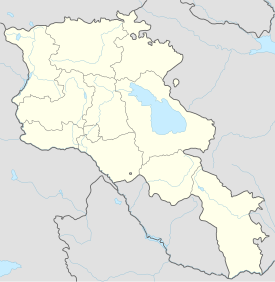| Church of Saint John Սուրբ Յովհաննես Եկեղեցի | |
|---|---|
 St. John Church of Mastara, October 2014 View from the southwest | |
| Religion | |
| Affiliation | Armenian Apostolic Church |
| Location | |
| Location | Mastara, Aragatsotn Province, Armenia |
| Geographic coordinates | 40°27′06″N43°53′02″E / 40.451631°N 43.883883°E |
| Architecture | |
| Style | Armenian |
| Completed | 5th century |
The Church of Saint John (Surp Hovanes), also known as Mastara Church, in Mastara, Armenia, dates from the 5th century. It features a variation of the cruciform plan and central cupola'd church. In accordance with its square plan, the four projecting apses, inward-facing circular and outward facing polygonal, offer the requisite supports to hold up the imposing polygonal cupola. The complex church designs are like those in Avan and St. Hripsime Church, Echmiadzin.

The works of medieval architecture in Mastara include, among others, numerous khachkars.











